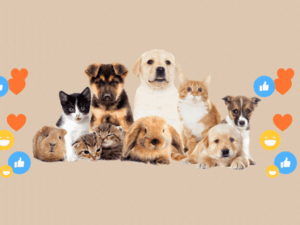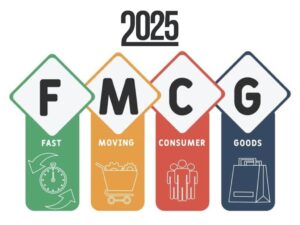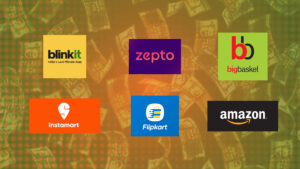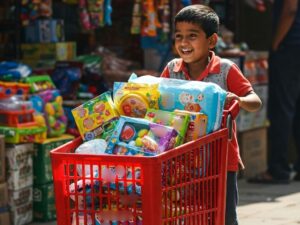
India’s fashion retail sector has experienced significant growth over the years, with projections indicating it will surpass $125 billion by 2025.
India’s fashion retail sector has experienced significant growth over the years, with projections indicating it will surpass $125 billion by 2025.
Historical data reveals a consistent upward trajectory in the market’s expansion.
Between 2018 and 2023, the apparel segment of India’s fashion market exhibited a compound annual growth rate (CAGR) of approximately 14.4% as per Statista estimates.
This robust growth underscores the increasing consumer demand and the sector’s resilience.
Looking ahead, forecasts suggest that from 2024 to 2030, the Indian fashion retail market is expected to grow at a CAGR of 12.65%, reaching an estimated value of $125.31 billion by 2030 as per projections by Blue Weave Consulting.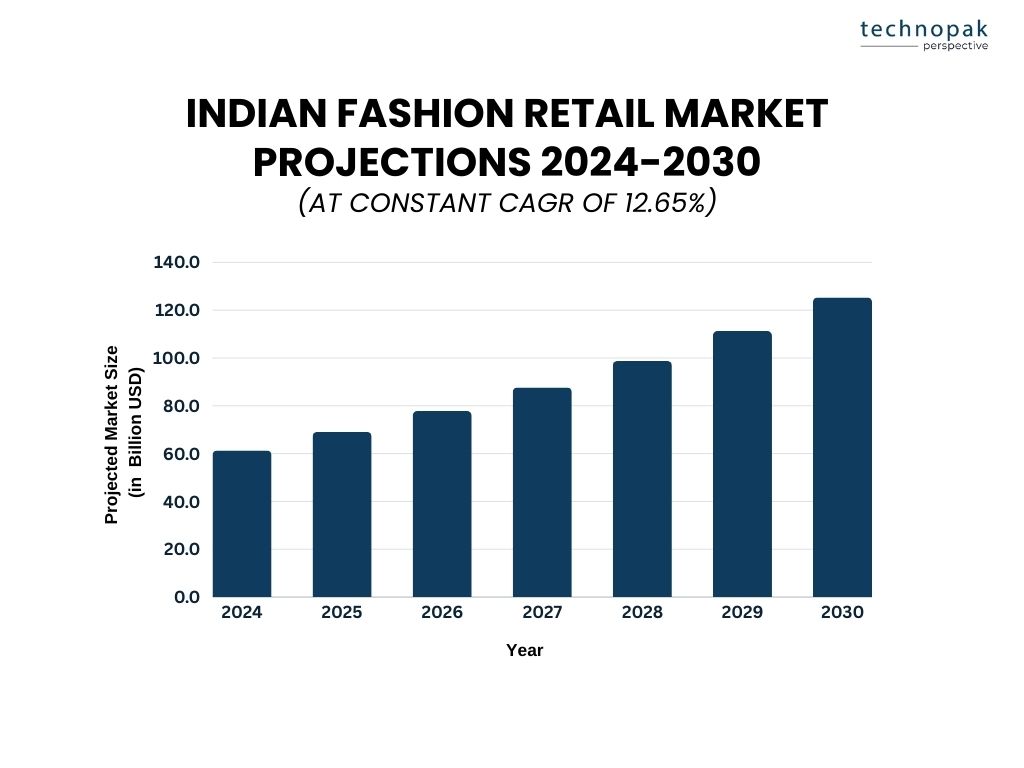 This anticipated growth reflects the market’s ongoing expansion and the opportunities it presents for stakeholders.
This anticipated growth reflects the market’s ongoing expansion and the opportunities it presents for stakeholders.
Digital transformation is anticipated to be at the forefront, reshaping how brands engage with consumers.
Influencer marketing, which has shifted from a supplementary tactic to a core strategy, is likely to continue driving this transformation.
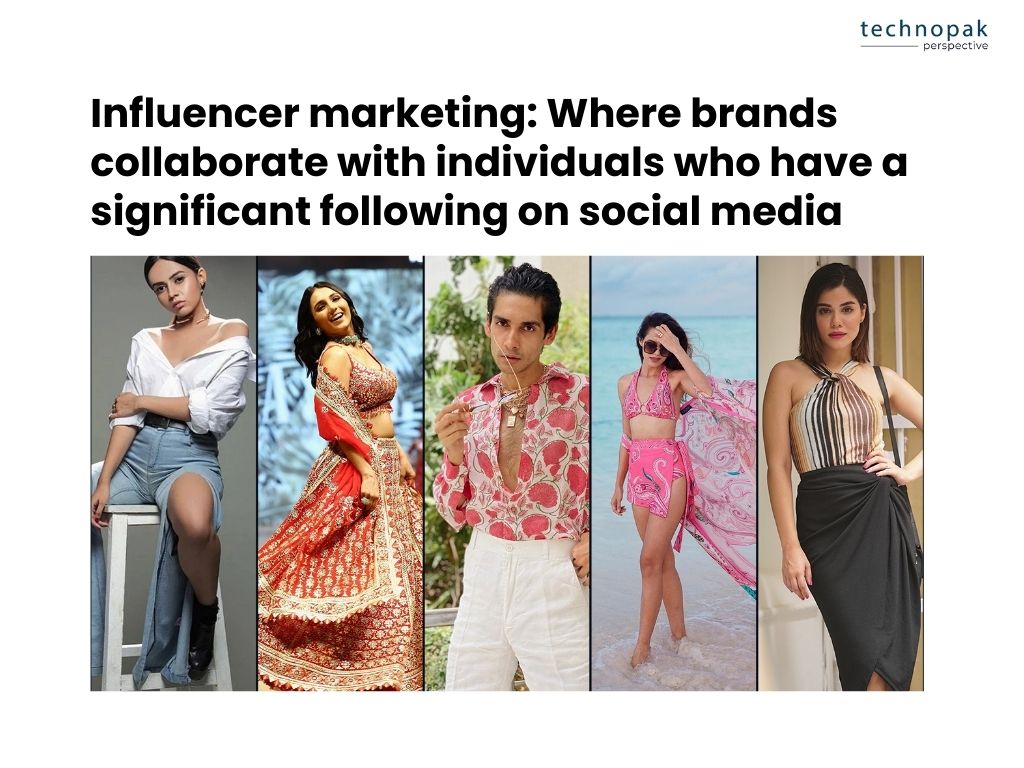
Influencer marketing is a strategy where brands collaborate with individuals who have a significant following on social media platforms like Instagram, YouTube, TikTok, and blogs.
These influencers, who are often experts or trendsetters in their niches, endorse or recommend products to their followers, making it an effective way to reach and influence target audiences.
Unlike traditional advertising, influencer marketing feels more authentic as influencers present products in a way that resonates personally with their followers.
In the fashion industry, influencer marketing is widely used for a variety of purposes: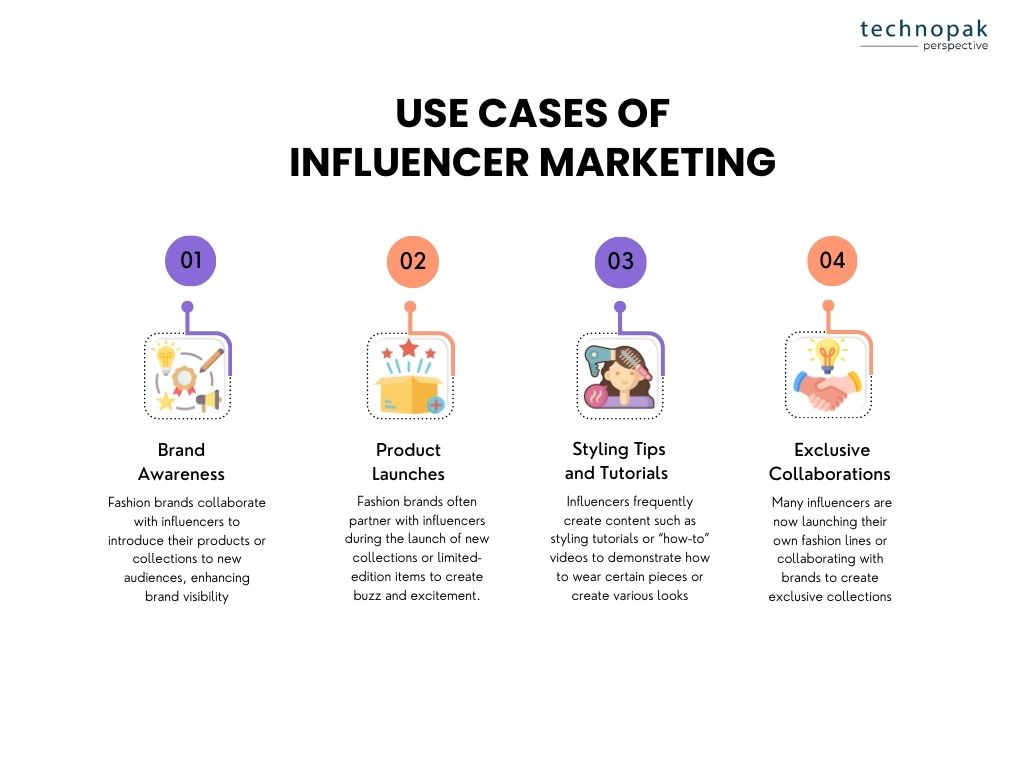
These strategies have proven effective in reaching targeted demographics and creating more meaningful interactions between brands and their audiences.
By 2025, India is projected to have approximately 900 million active internet users, making it one of the largest digital markets globally, according to an Economic Times report.
This substantial online population will predominantly consist of Gen Z and Millennial consumers, who are known for their digital-savvy behavior and high social media engagement.
These two demographic groups are expected to drive the next wave of fashion consumption in India, and influencer marketing will play a crucial role in shaping their purchasing decisions.
Influencer marketing is particularly effective in the fashion industry, where visual appeal and emotional connection are vital in influencing buying decisions. 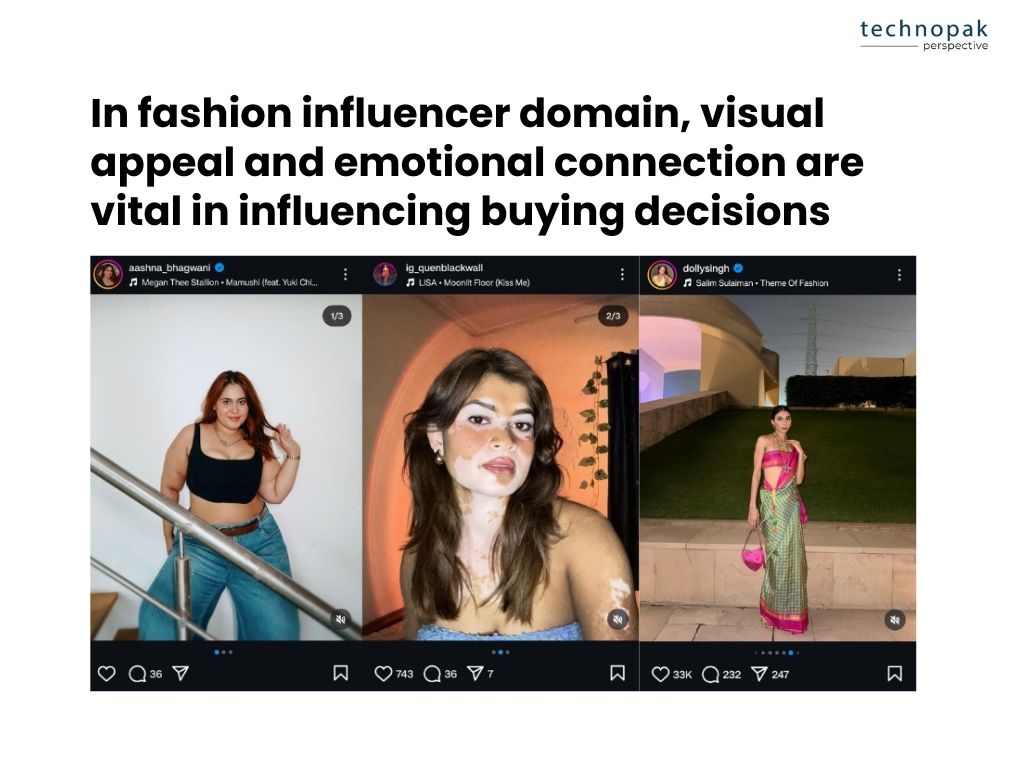
Fashion, being a highly visual and personal product category, relies on influencers who can showcase products in a relatable, aspirational way.
Consumers increasingly look to influencers for inspiration on how to style outfits, discover new brands, and make purchasing decisions that align with their personal identity.
Studies like those conducted by Influencer Marketing Hub indicate that approximately 50% of Millennials trust product recommendations from influencers, with this figure rising to 61% in 2023.
This shift in trust is primarily due to the authentic, relatable nature of influencers’ content, which often feels more genuine than traditional advertisements.
Unlike celebrities, influencers typically maintain a closer, more personal connection with their followers, making their recommendations feel more trustworthy.
Fashion retail brands are increasingly recognizing this shift and are expected to leverage influencer marketing to engage customers at scale in 2025.
According to a 2023 report by Statista, 67% of fashion brands in India already use influencer marketing as part of their overall strategy, and that number is projected to rise significantly by 2025.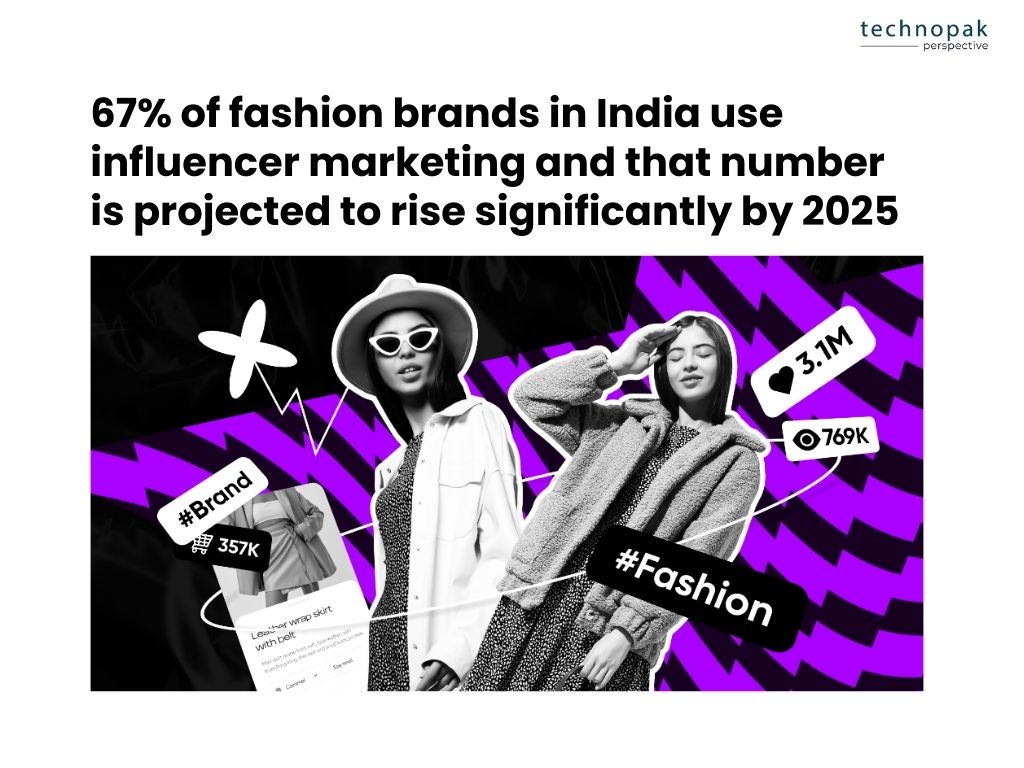
Brands will continue to partner with influencers to expand their reach, drive product discovery, and increase consumer engagement, all of which will be essential as the digital space becomes more competitive.
Moreover, influencer marketing’s ability to drive emotional connections with consumers will become even more important as India’s fashion market grows.
Younger audiences are increasingly prioritizing values such as sustainability, inclusivity, and authenticity, and they turn to influencers to help them navigate brands that align with these ideals.
In 2025, fashion brands that effectively collaborate with influencers will not only build trust but will also create a more loyal, engaged customer base that is actively invested in the brand’s message and mission.
Fashion brands across India will likely work with a range of influencers, each bringing unique advantages based on their reach, audience type, and content style.
1. Mega and Celebrity Influencers: Celebrities such as Alia Bhatt and Virat Kohli, with millions of followers, will continue to engage in partnerships with high-end and luxury brands. 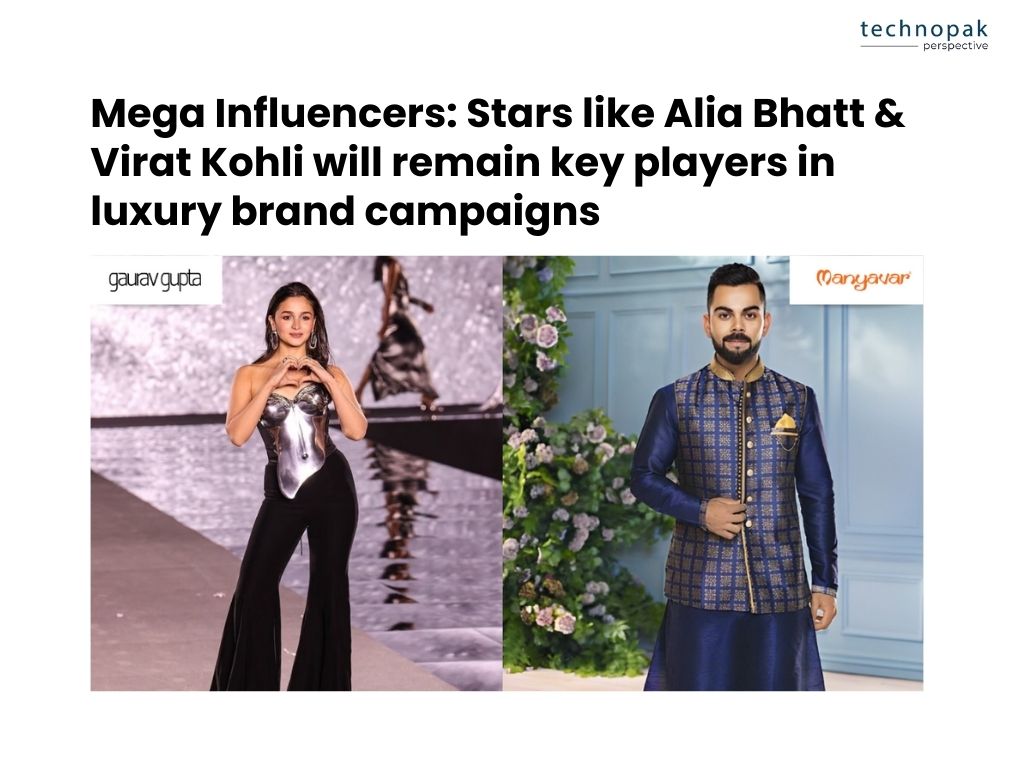
In 2023, Alia Bhatt was appointed as Gucci’s first Indian global brand ambassador.
Following this, she participated in Gucci’s “The 21” series, where she shared insights into her life and the contents of her Gucci Bamboo 1947 handbag.
Additionally, Alia attended Gucci’s fashion shows, including the Cruise 2024 show in Seoul and the Spring/Summer 2024 show at Milan Fashion Week, where she showcased Gucci’s designs.
These activities were prominently featured on her social media platforms, effectively promoting Gucci’s brand and products.
Mega influencers are expected to be highly influential for luxury retail and big-budget campaigns, though they may remain beyond the budget for smaller brands.
2. Macro Influencers: Expected to have audiences between 100,000 and a million followers, macro influencers should remain ideal for regional and national brands. 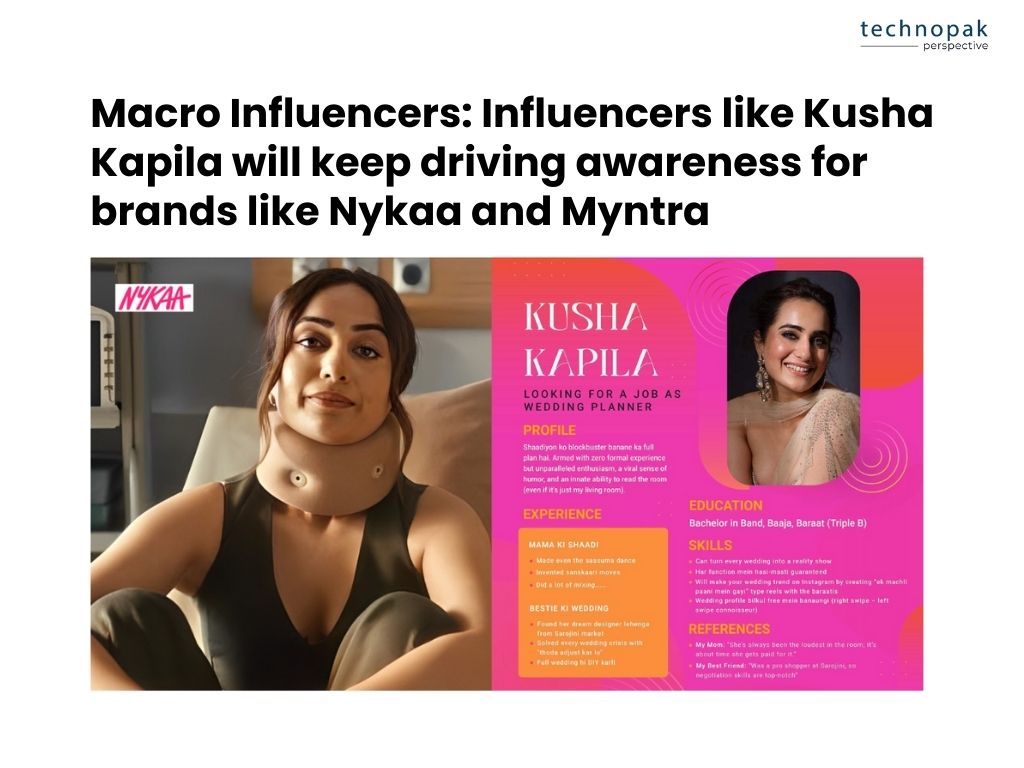
Influencers like Kusha Kapila and Komal Pandey, known for their unique style and engaging content, are likely to continue collaborations with brands such as Nykaa Fashion and Myntra, driving product awareness and sales among mid-range consumers.
3. Micro and Nano Influencers: With a follower count ranging from a few thousand to 100,000, micro and nano influencers will likely be cost-effective options that foster meaningful connections within local communities. 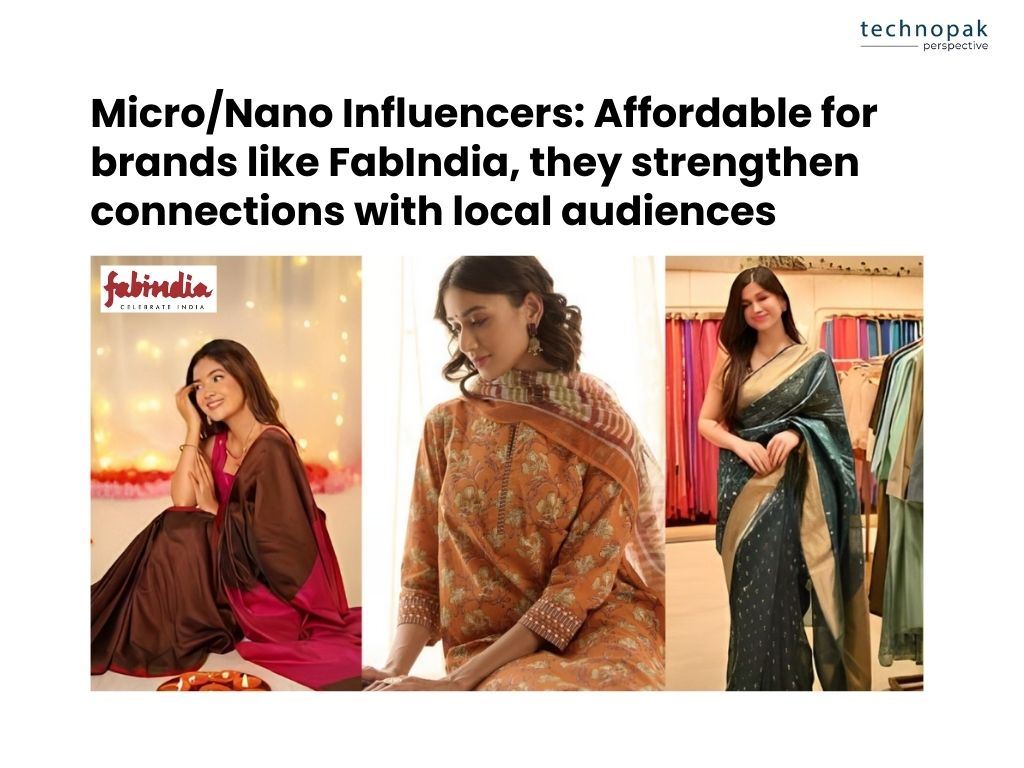
Brands such as FabIndia and Pantaloons are expected to tap into this segment, partnering with regional influencers to enhance their presence in tier-2 and tier-3 cities, making their fashion lines accessible and relatable.
The influencer marketing landscape is set to evolve, shaped by several emerging trends aimed at enhancing brand visibility and customer engagement:
1. Authenticity and Transparency: By 2025, consumers are projected to become even more discerning, favoring unfiltered, authentic content over overly polished media.
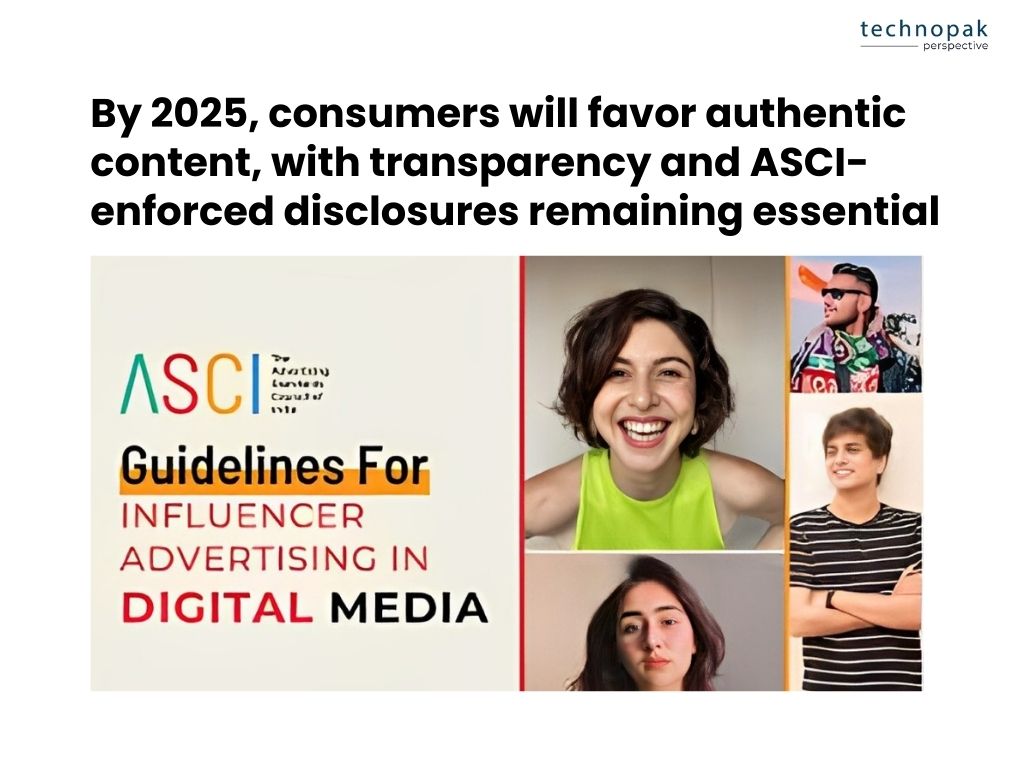
Transparency will remain crucial, with influencers continuing to disclose partnerships.
The Advertising Standards Council of India (ASCI) is likely to enforce these disclosure mandates to ensure ethical marketing practices.
2. Video-First Content: Video is predicted to continue dominating in 2025, with platforms such as Instagram Reels, YouTube Shorts, and the Indian app Moj leading the way.
Short-form video content will likely be crucial for fashion brands to showcase styling tips and product details.
In October 2023, H&M India unveiled its Festive Collection featuring actress Athiya Shetty. 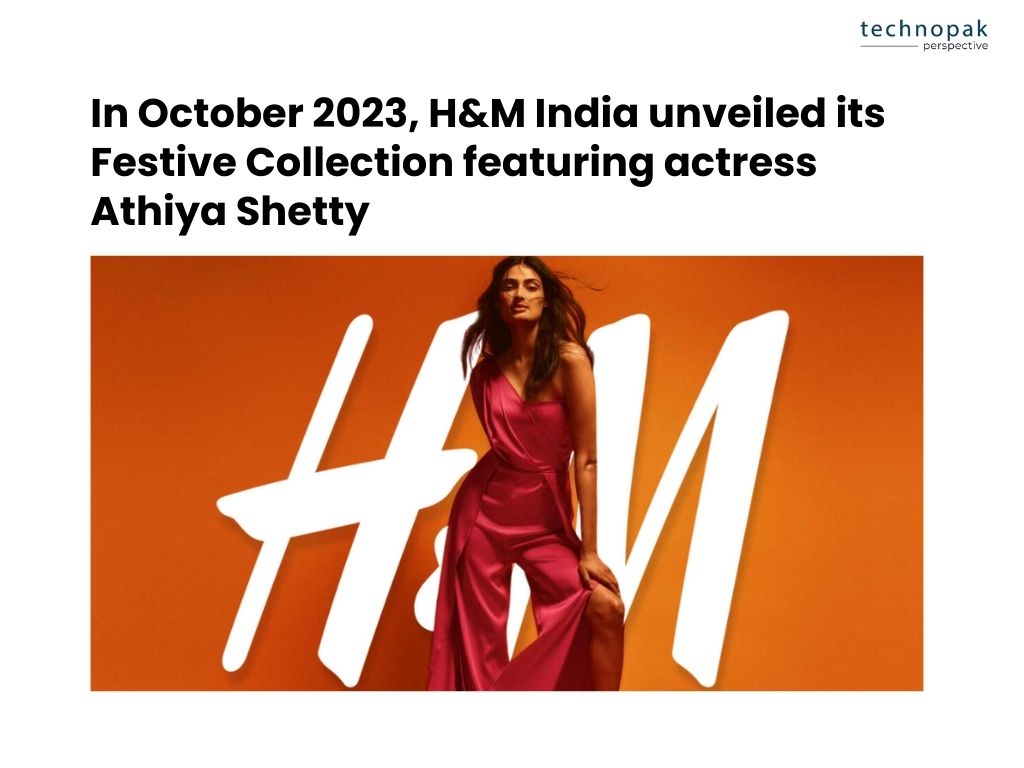
The campaign showcased party-ready outfits and was promoted through various social media platforms, including collaborations with influencers to reach a wider audience
3. Interactive and Immersive Experiences: Virtual try-ons and augmented reality (AR) features are expected to transform the shopping experience.
Brands like Tata Cliq Luxury and Reliance Trends will likely continue to adopt advanced AR tech to offer virtual try-on experiences, enabling customers to visualize products from home. 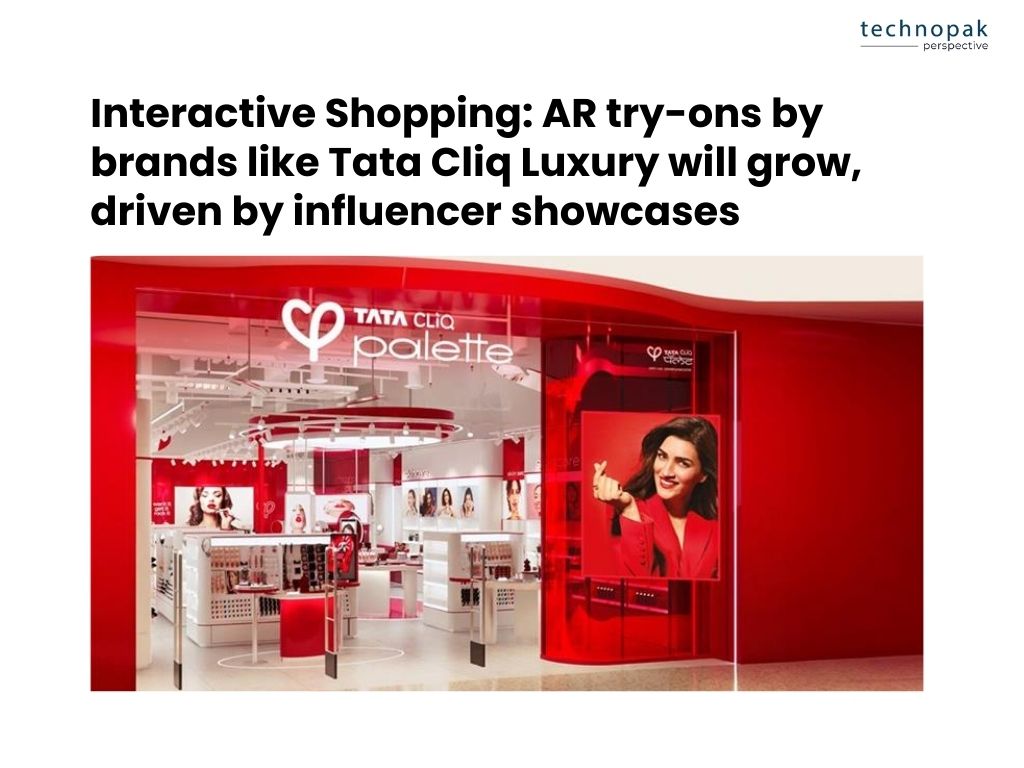
Influencers showcasing these experiences on social media are expected to draw more consumers into exploring these innovative options.
4. Influencers as Brand Creators: Influencer-turned-entrepreneurs will likely grow more common.
Influencers such as Masoom Minawala and Santoshi Shetty, known for launching their own collections, are expected to set the standard for co-created product lines that consumers view as highly desirable.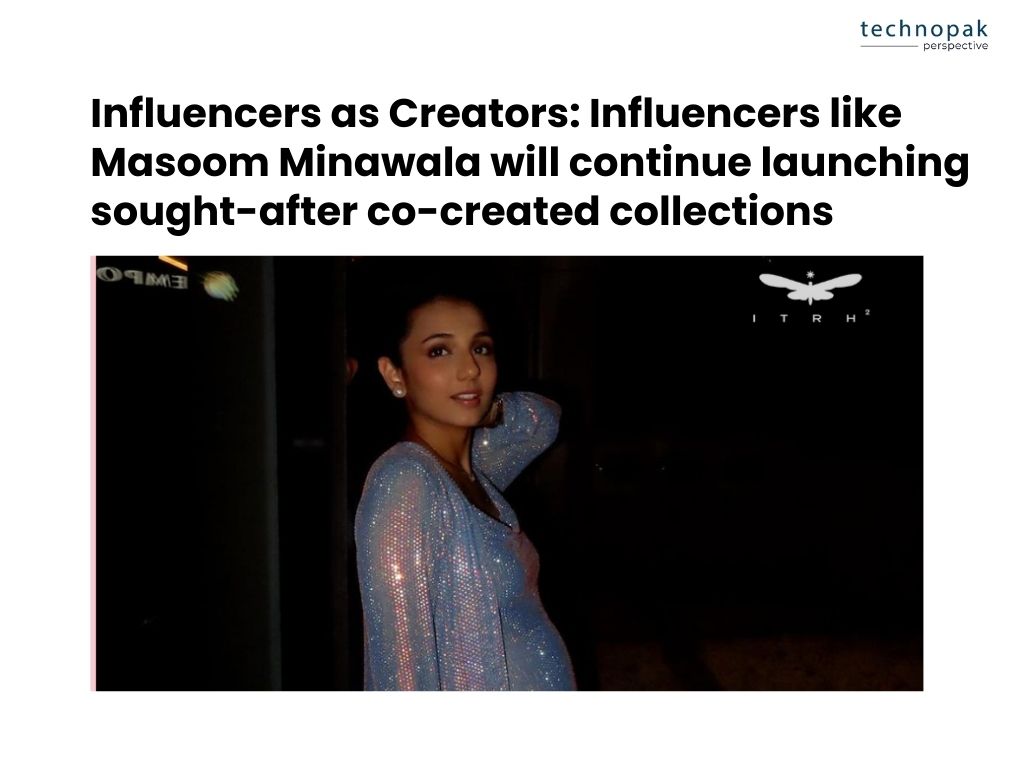
5. The Integration of AI and Data Analytics in Indian Influencer Marketing: By 2025, Artificial Intelligence (AI) and data analytics are expected to transform influencer marketing in India, tailoring it to the country’s unique digital landscape.
Indian brands will increasingly rely on AI-driven tools to identify influencers whose audience demographics align with specific regional and cultural markets. 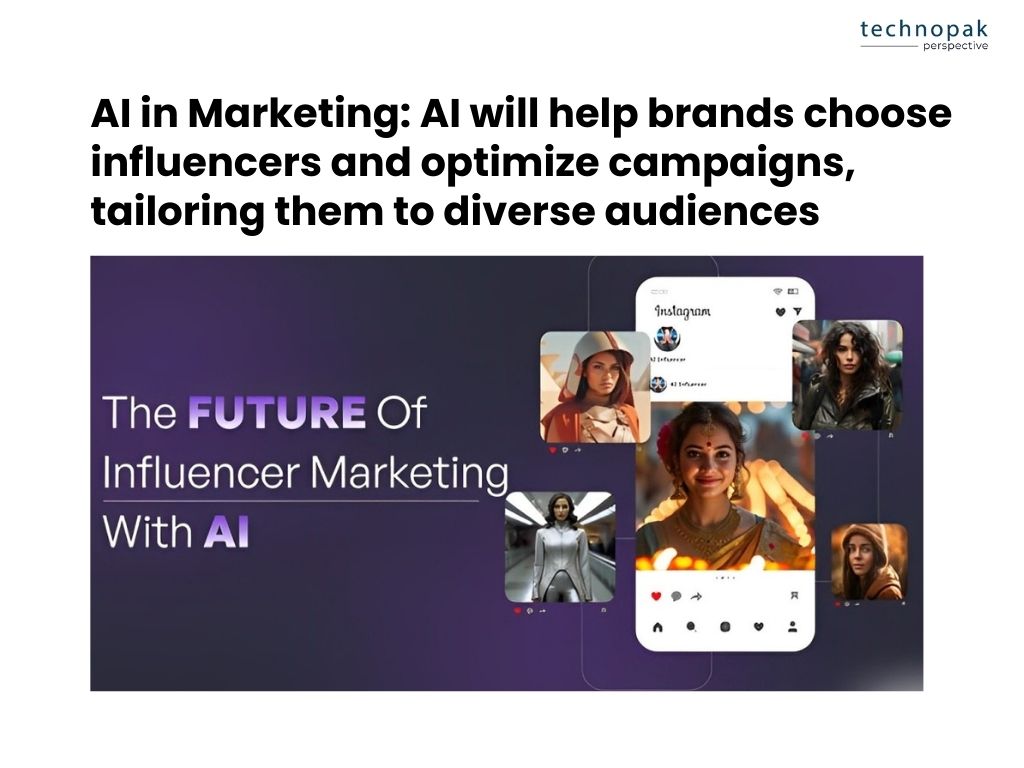
These tools will analyze engagement rates, authenticity scores, and linguistic preferences, enabling brands to select influencers who can resonate with their target audiences.
With platforms like Influencity and Winkl gaining traction in India, predictive analytics will allow fashion retailers to forecast campaign outcomes, optimize budgets, and fine-tune strategies in real-time.
For instance, a brand launching a regional saree collection will use AI to predict which influencers will best reach an audience celebrating festivals like Durga Puja or Onam, maximizing campaign effectiveness.
6. The Rise of Niche Communities and Micro-Trends in India: India’s diversity makes it a fertile ground for micro-trends and niche communities, which are increasingly prioritized by social media algorithms.
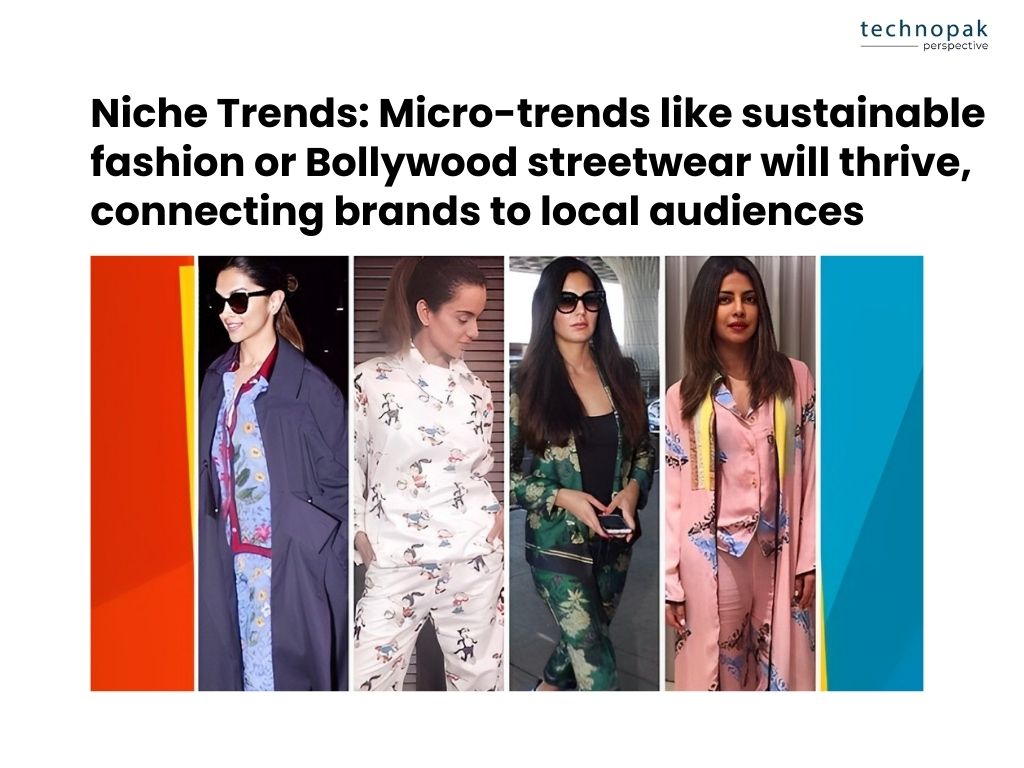
These trends are often driven by smaller, highly engaged groups focusing on specific cultural, regional, or stylistic preferences.
For example, the growing popularity of sustainable fashion from local artisans in Gujarat or the rise of streetwear inspired by Bollywood and cricket culture are clear indicators of this shift.
Influencers specializing in hyper-local fashion—be it Kancheepuram silk sarees from Tamil Nadu or Banarasi dupattas from Uttar Pradesh—help brands connect authentically with diverse audience segments.
By tapping into these niche communities, brands will address localized preferences, creating a stronger bond with consumers in tier-2 and tier-3 cities.
7. The Growth of Regional Language Content in India: India’s linguistic diversity will play a pivotal role in shaping influencer marketing by 2025.
With the surge of internet users from tier-2 and tier-3 cities, content in regional languages like Hindi, Tamil, Telugu, Bengali, and others will become essential for effective engagement.
Influencers creating content in vernacular languages on platforms like Moj and ShareChat are already bridging the gap between brands and regional audiences. 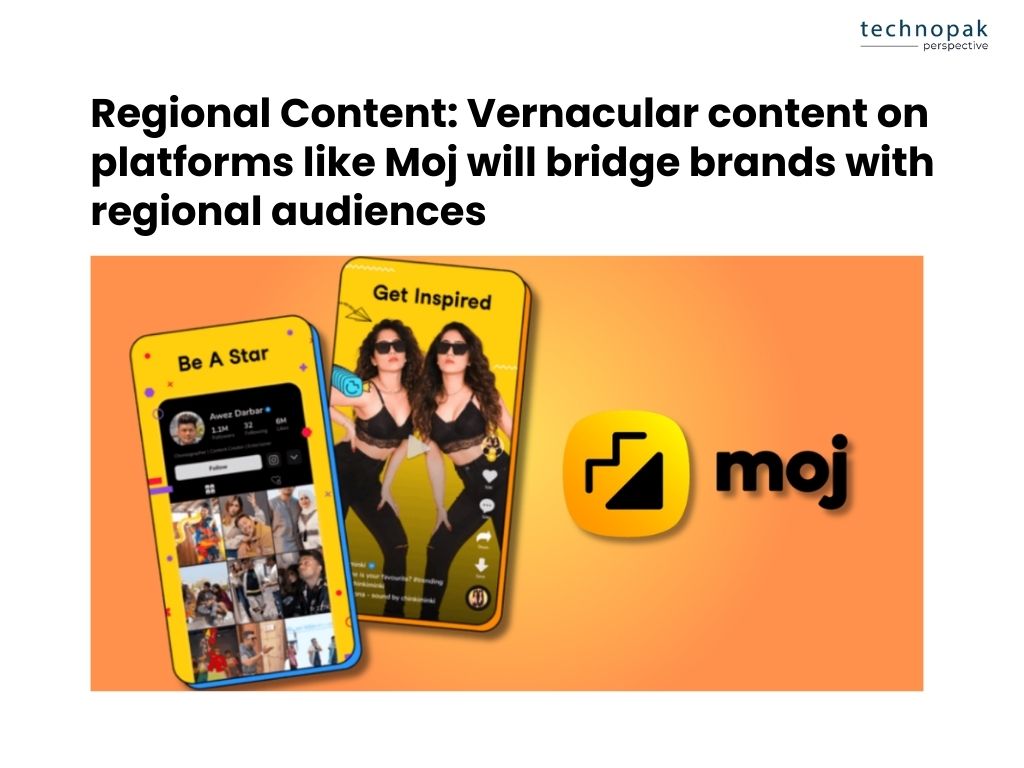
For instance, a fashion brand targeting Punjabi-speaking millennials could collaborate with local influencers to promote wedding wear collections through Punjabi Reels or tutorials on traditional turban styling.
This shift toward regional language content ensures inclusivity and allows brands to tap into culturally diverse consumer bases effectively.
8. Sustainability as a Core Focus for Indian Consumers: As sustainability becomes a top priority for Indian shoppers, influencer marketing campaigns will increasingly highlight eco-friendly practices. 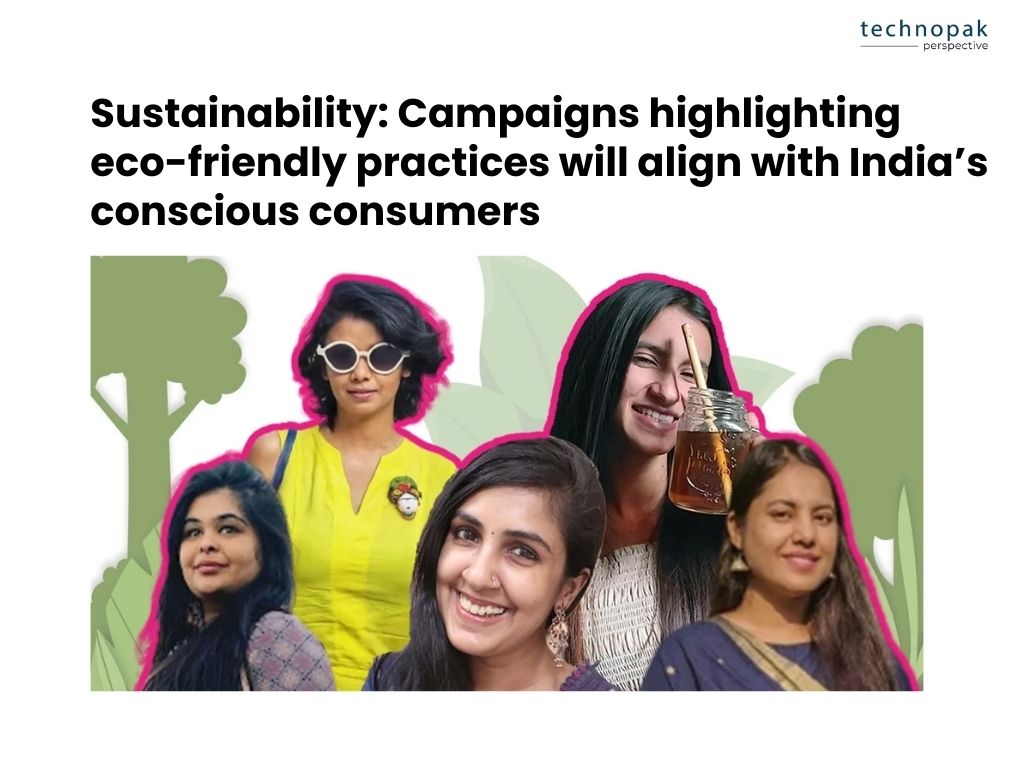
Collaborations with influencers advocating slow fashion, handwoven fabrics, and upcycled collections will resonate with environmentally conscious audiences.
Brands like Biba and H&M India are already incorporating sustainable practices into their marketing strategies.
For example, influencers might promote a “Wear Your Culture” campaign, showcasing sustainable, handwoven sarees or kurtas made by artisans in Rajasthan or Odisha.
This emphasis on sustainability will align with Indian consumers’ growing awareness of ethical production and their preference for brands that contribute to the Make in India initiative.
9. Leveraging Live Shopping and Social Commerce in India: Live shopping events and social commerce are set to dominate influencer marketing strategies in India by 2025.
Platforms like Instagram Live, YouTube Live, and Indian platforms such as Bulbul and Trell are creating real-time interaction opportunities between influencers and audiences.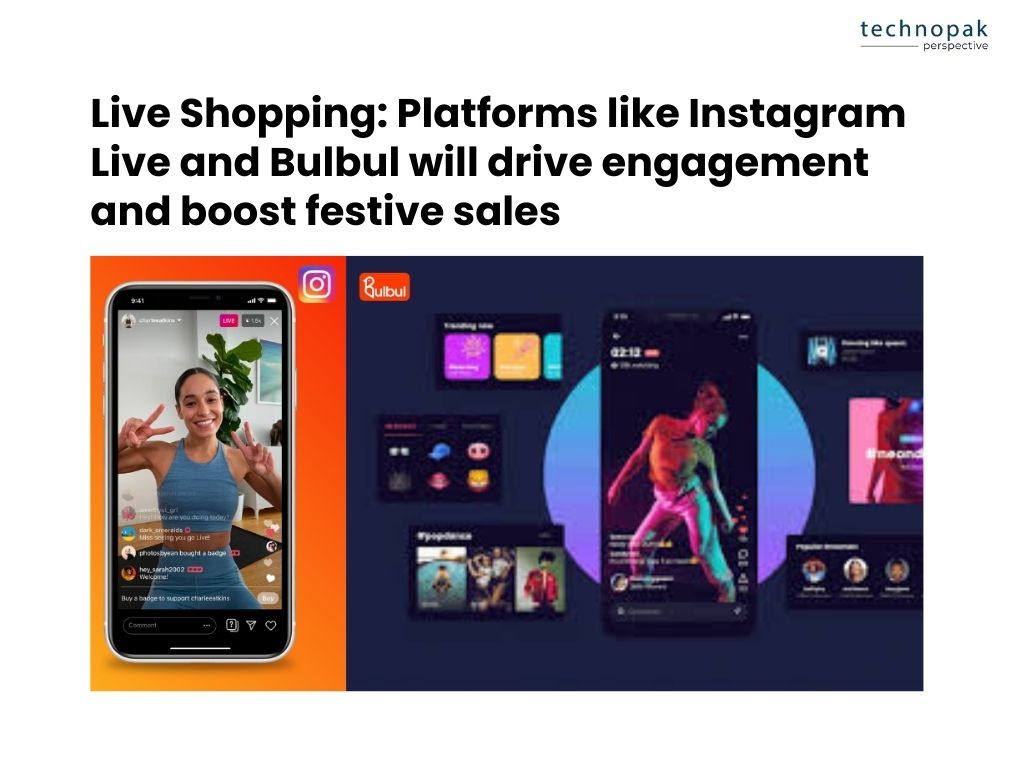
During these events, influencers can demonstrate products, answer questions, and offer exclusive discounts.
For example, a bridal wear collection launch during the wedding season could feature influencers styling lehengas live while responding to viewers’ queries about colors, fittings, and accessories.
With studies suggesting live shopping can increase conversion rates by up to 30%, this trend is expected to drive impulse purchases during major shopping festivals like Diwali, Eid, and Dussehra.
As influencer marketing matures, brands will need to navigate several challenges to optimize its effectiveness in 2025.
1. Regulatory Compliance: ASCI is expected to maintain active enforcement of guidelines surrounding transparent disclosures. 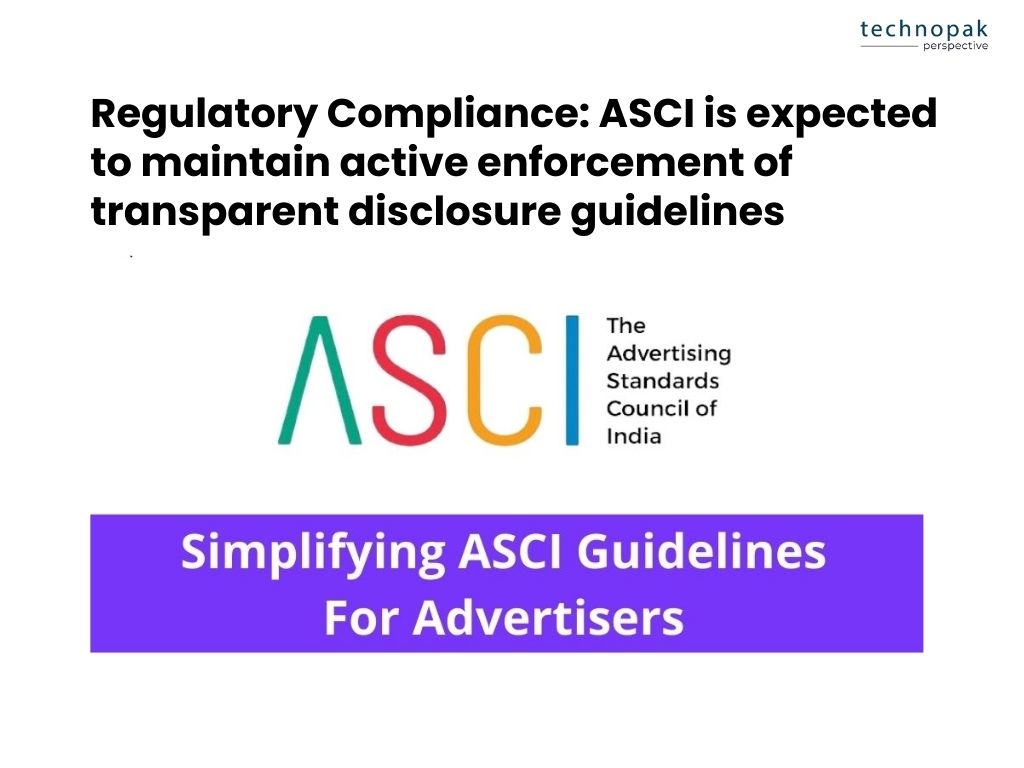
Brands must stay vigilant, ensuring all influencer collaborations adhere to these regulations to avoid fines and maintain credibility.
2. Dealing with Fake Influencers in India: As influencer marketing continues to grow in popularity, the issue of fake influencers—those who inflate their follower counts or engagement metrics—remains a significant challenge in India.
Brands will ensure authenticity in their collaborations to maintain trust with their audiences.
Advanced tools like FollowerAudit and Winkl are emerging as critical solutions for Indian marketers. 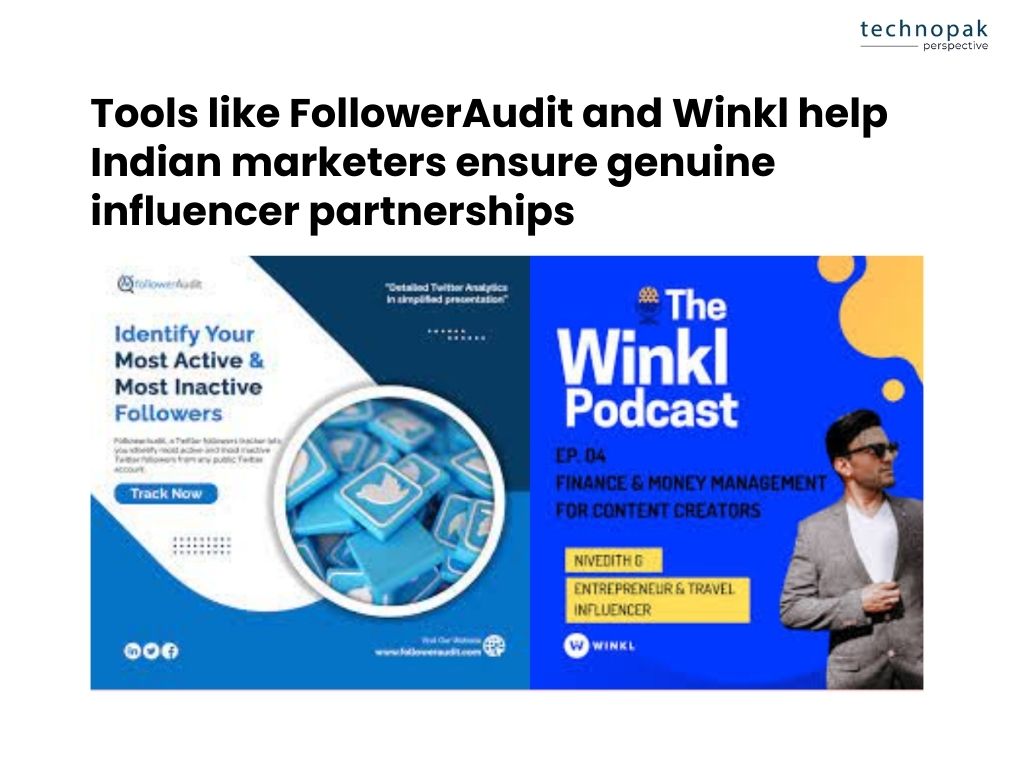
These platforms analyze follower authenticity and engagement to ensure partnerships with genuine influencers.
For example, an influencer promoting ethnic wear for a Navratri campaign would need to demonstrate genuine audience interaction to build credibility and deliver real ROI.
Brands will also need to balance collaborations with influencers across regional and urban markets to avoid over-reliance on mega influencers, who may not always deliver personalized engagement.
3. Brand Safety: Choosing influencers whose values align with the brand will remain crucial. 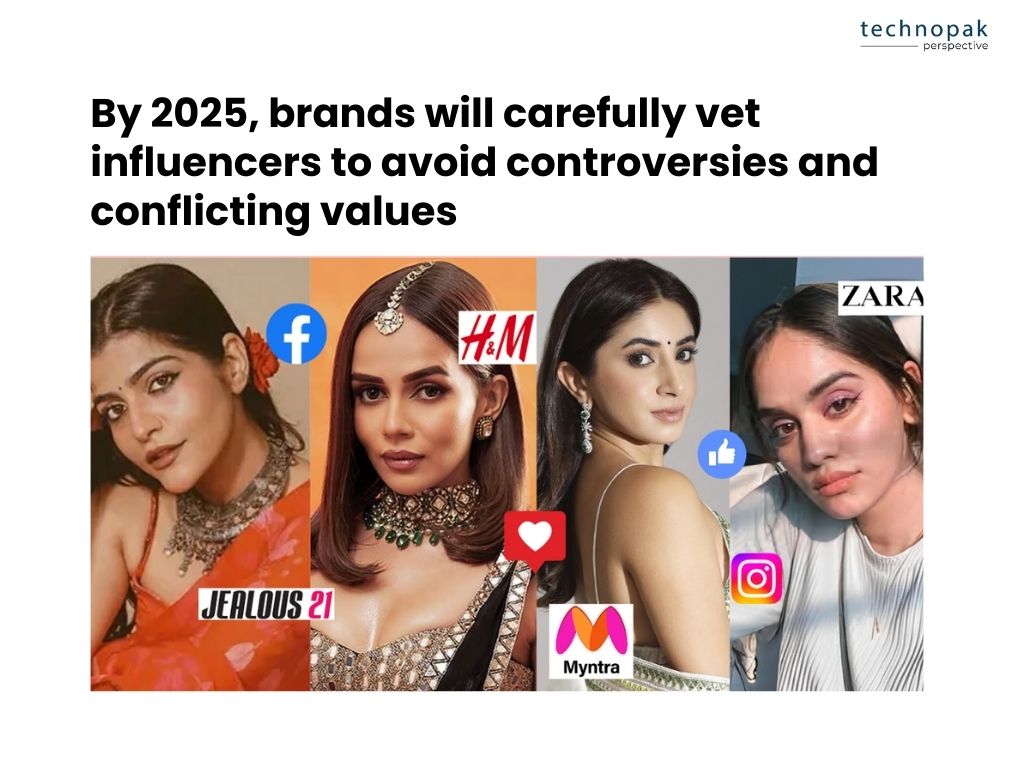
In 2025, brands are projected to be even more rigorous in vetting influencer profiles to ensure they are not associated with controversial or conflicting values.
4. ROI Measurement: As the market matures, brands are likely to seek more concrete ways to measure the success of influencer campaigns. 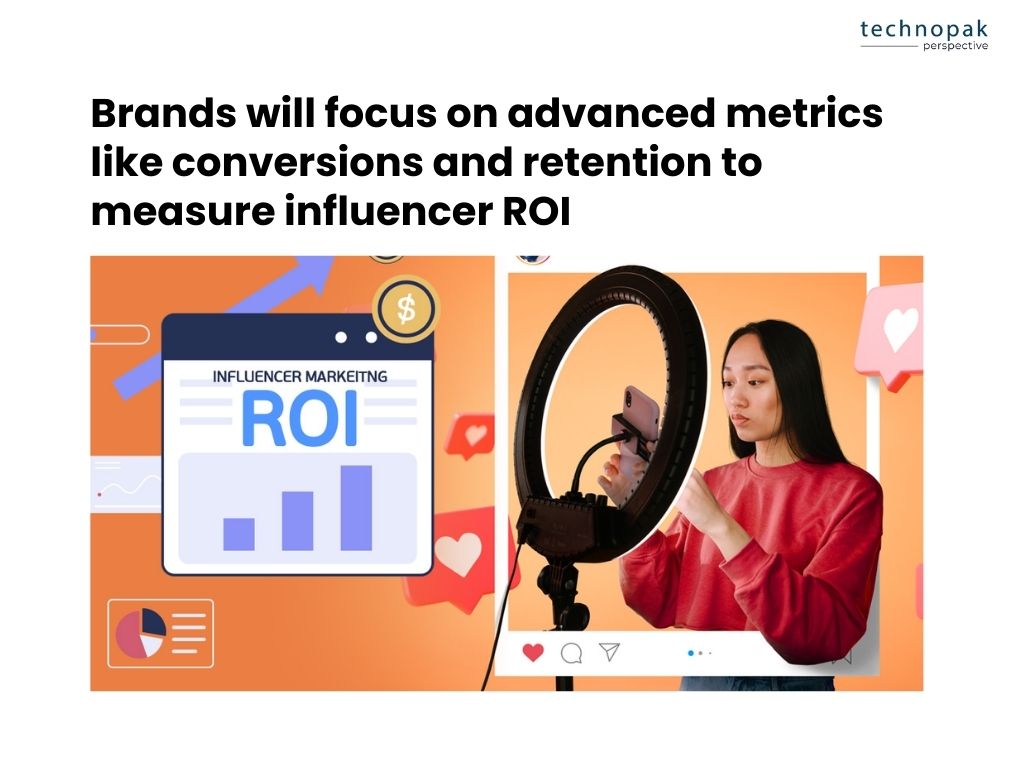
In addition to traditional metrics like likes and shares, brands are expected to rely more on metrics like click-through rates, conversions, and customer retention rates.
Platforms such as Winkl and Qoruz are expected to provide advanced analytics tools that help brands evaluate these metrics.
5. Balancing Budget with Reach: Mega influencers may continue to offer mass visibility, while micro and nano influencers are likely to deliver high engagement at a fraction of the cost. 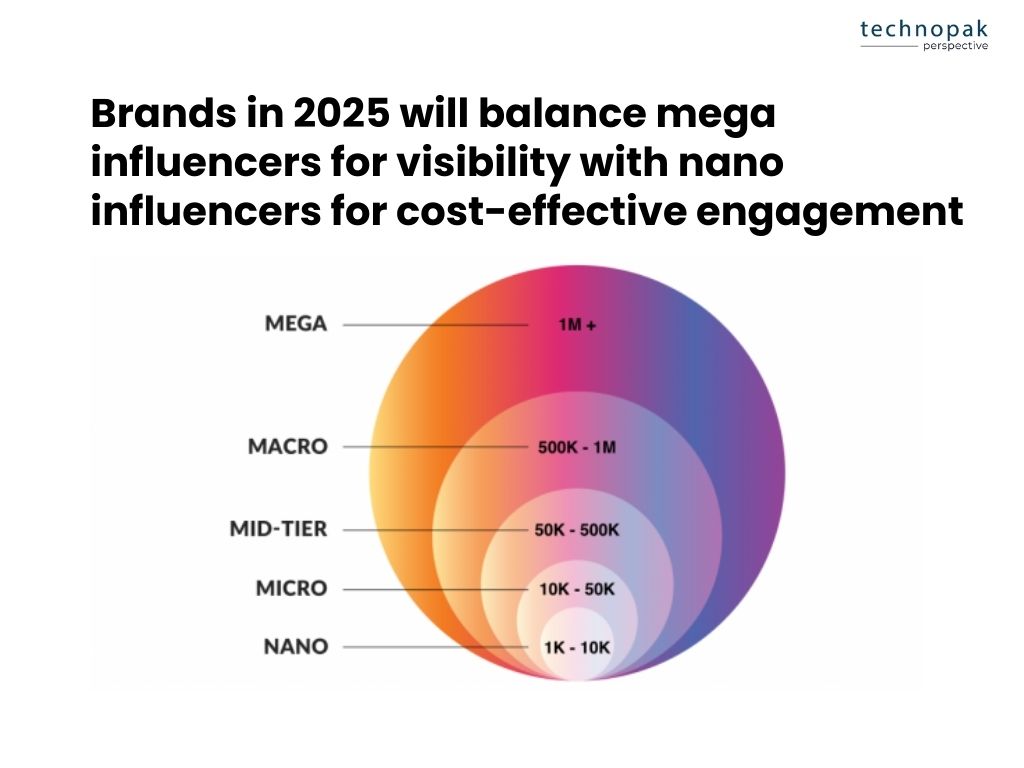
Brands in 2025 will likely focus on finding the right mix to maximize ROI, utilizing nano influencers for niche campaigns while reserving bigger budgets for broader campaigns.
1. Urbanic’s Gen Z Strategy
Urbanic, a popular fast-fashion brand among Gen Z, achieved tremendous growth in 2024 by focusing on micro-influencers in tier-1 cities like Mumbai and Delhi.
Savana by Urbanic has engaged in several social media collaborations with influencers.
One notable campaign was the #SavanaLimitless initiative, which featured influencers like Uorfi Javed, Dharna Durga, and Anushka Sen. This campaign aimed to promote Savana’s products while supporting educational programs through Teach for India.
In addition to Uorfi Javed, Dharna Durga, and Anushka Sen, Savana by Urbanic collaborated with several other influencers for their #SavanaLimitless campaign. Some of these influencers include: Nancy Tyagi, Pratibha Girdhar, Khushi Kakkar and Deepali.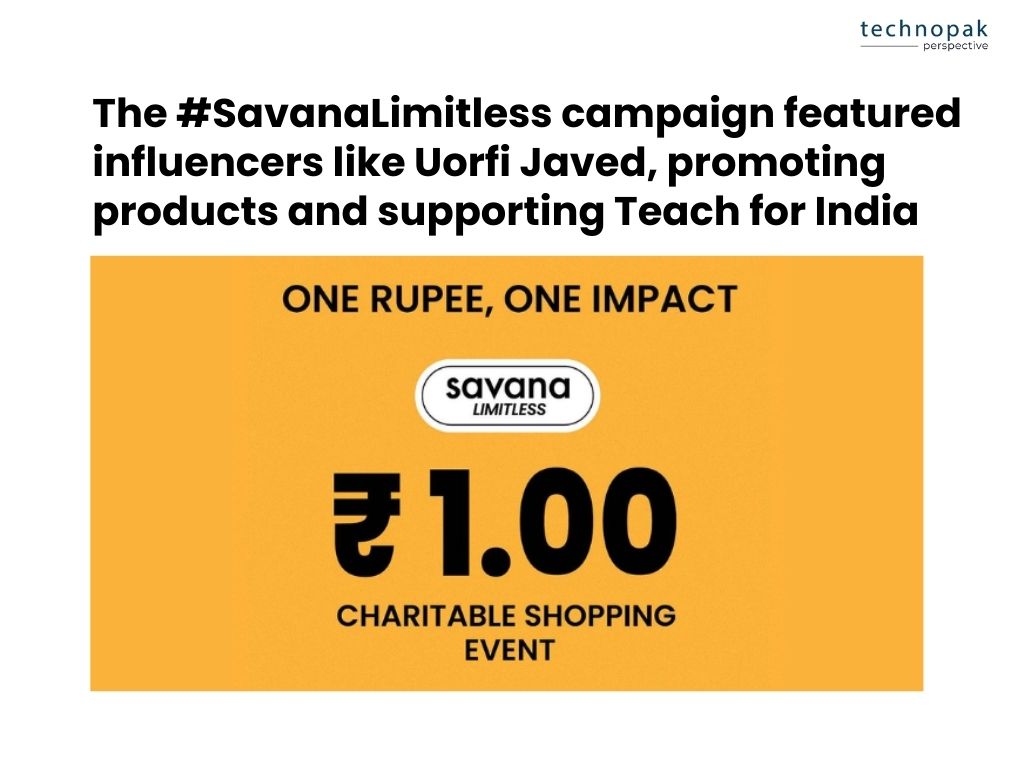
This approach resonated deeply with young urban audiences, driving a 25% growth in sales among Gen Z shoppers and increasing web traffic by 30%.
Urbanic’s success with micro-influencers underscores their ability to connect authentically with targeted demographics.
The brand is likely to expand these collaborations in 2025, focusing on inclusivity and affordability to capture even larger market segments.
2. FabIndia’s Regional Expansion Through Nano Influencers
Fabindia’s #FindYourGulabo campaign, launched in February 2023, encouraged the community to share their passion and spark through shades of pink, inspired by Pantone’s color of the year, Viva Magenta. 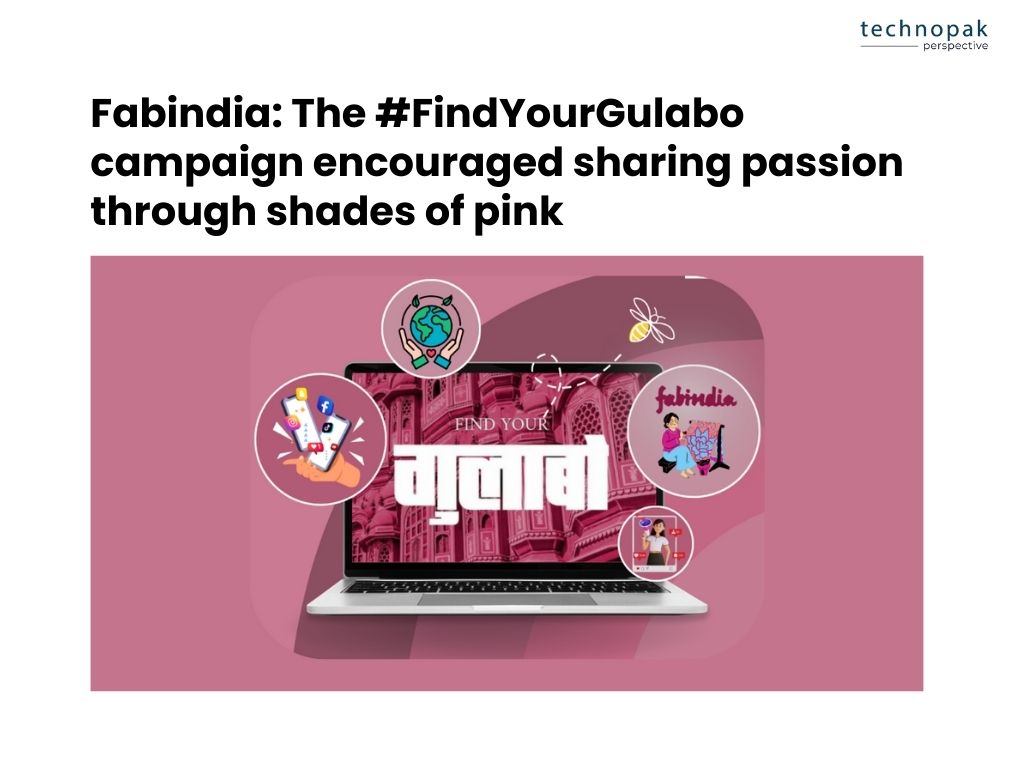
Participants were invited to upload videos of themselves pursuing their passions while wearing something pink, using the hashtag #FindYourGulabo and tagging @fabindiaofficial on Instagram.
This initiative aimed to engage a broad audience, including creators, followers, members, and collaborators, to celebrate individuality and joy through vibrant hues
This strategy led to a 22% increase in sales from these markets, demonstrating the power of localized influencer campaigns.
By leveraging the authenticity and relatability of nano influencers, FabIndia successfully expanded its presence in smaller cities. The brand is expected to continue this approach in 2025, focusing on festivals like Diwali and Pongal to drive regional engagement.
3. Nykaa Fashion’s Interactive Instagram Reels Campaign
Nykaa Fashion has actively collaborated with various Indian social media influencers to enhance its brand presence and engage a broader audience.
Notably, in June 2024, the brand launched the ‘Stay Stylish’ campaign featuring Bollywood actress Janhvi Kapoor and social media influencer Kusha Kapila. 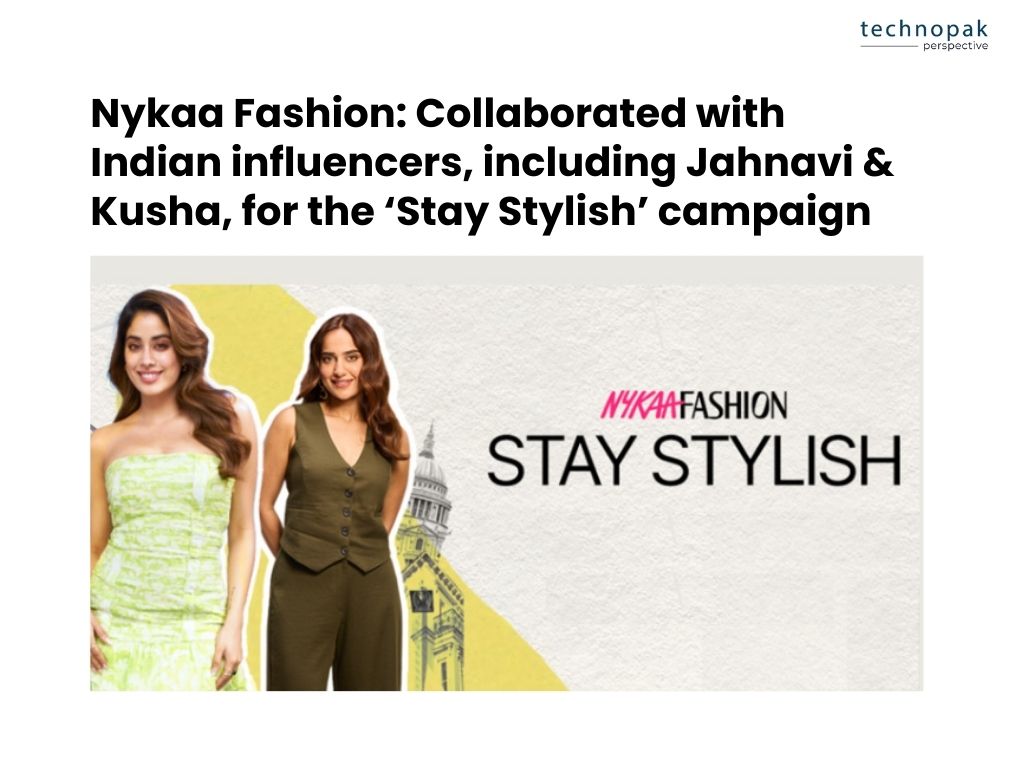
This campaign included digital films where both celebrities highlighted Nykaa Fashion’s offerings in humorous and unexpected scenarios, emphasizing the brand’s appeal.
With over 20 million views, the campaign significantly boosted Nykaa’s visibility, resulting in a 15% growth in app downloads and a marked increase in website traffic.
This success reinforces the effectiveness of short-form, engaging content in connecting with younger, tech-savvy consumers.
Nykaa is likely to double down on such campaigns in 2025 to strengthen its digital presence further.
4. Reliance Retail’s Tira Beauty Campaign
Reliance Retail’s beauty venture, Tira, launched a major campaign in 2023, signing Bollywood actresses Suhana Khan, Kiara Advani, and Kareena Kapoor Khan as brand ambassadors. 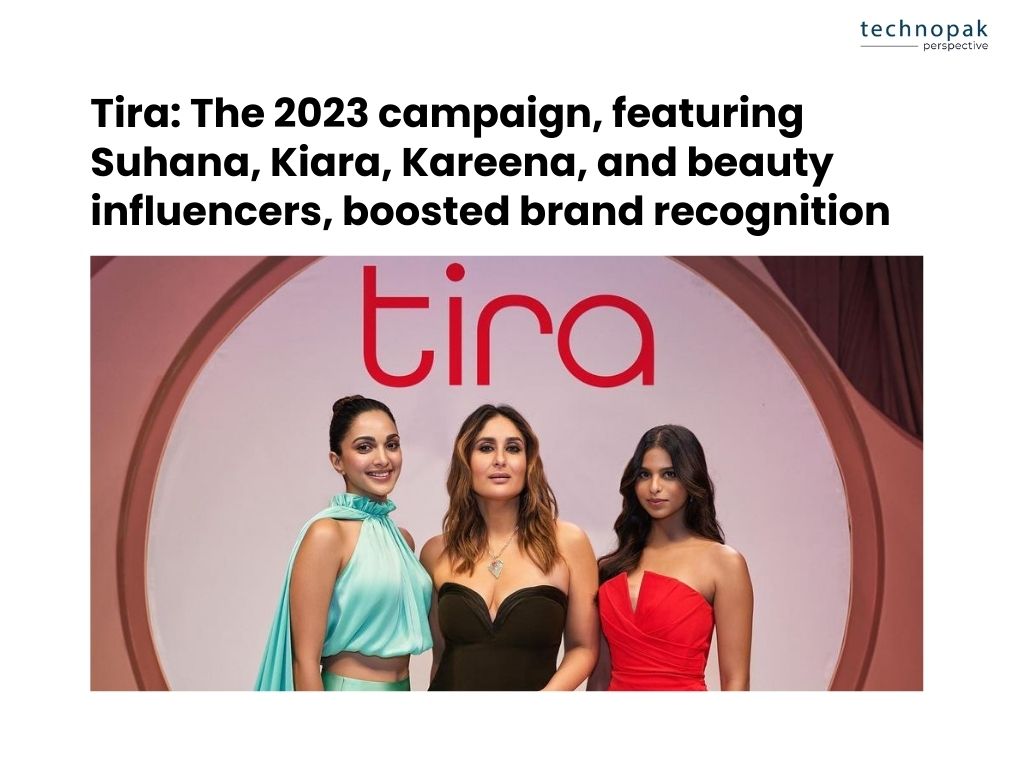
The campaign also involved collaborations with several beauty influencers to promote Tira’s products across social media platforms.
This comprehensive marketing strategy helped Tira establish a strong presence in the competitive beauty market, leading to increased brand recognition and customer engagement.
Reliance Retail plans to expand this approach in 2025, focusing on both physical and digital retail strategies to enhance customer experience.
As we chart the future of Indian fashion retail, the role of influencer marketing in 2025 emerges as a linchpin driving the sector to new heights.
With projections signaling a market value exceeding $125 billion by 2025 and an anticipated growth rate of 12.65% CAGR from 2024 to 2030, the industry is poised for remarkable expansion.
At the heart of this growth is digital transformation, where influencer marketing has evolved from a supplementary tactic to an essential strategy.
By harnessing the power of influencers, brands can not only boost visibility but also forge deeper consumer connections through authentic, relatable content.
As this landscape continues to evolve, aligning with trends like video-first content, regional language engagement, and sustainability will be crucial.
However, navigating challenges such as regulatory compliance and ROI measurement remains vital.
Embracing these dynamics with strategic agility will ensure that influencer marketing remains a cornerstone of success in India’s vibrant fashion retail sector, paving the way for brands to thrive in an increasingly digital world.

